How an ancient Japanese ritual helped a breast cancer survivor reclaim her body after illness
BBC editorial compliance specialist Karen Myers, 49, found seeing her breasts and scars reminded her of a negative time
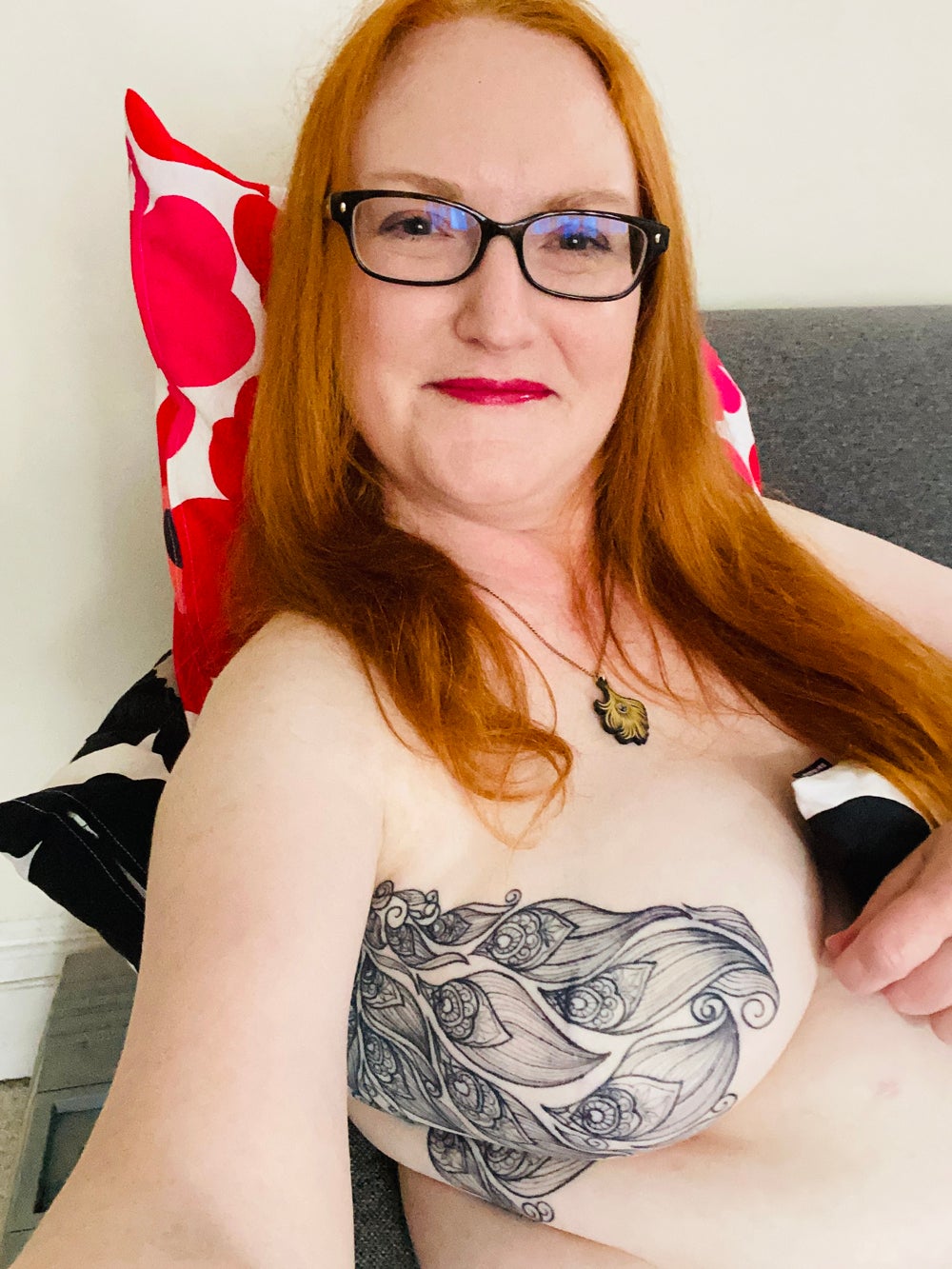
Your support helps us to tell the story
From reproductive rights to climate change to Big Tech, The Independent is on the ground when the story is developing. Whether it's investigating the financials of Elon Musk's pro-Trump PAC or producing our latest documentary, 'The A Word', which shines a light on the American women fighting for reproductive rights, we know how important it is to parse out the facts from the messaging.
At such a critical moment in US history, we need reporters on the ground. Your donation allows us to keep sending journalists to speak to both sides of the story.
The Independent is trusted by Americans across the entire political spectrum. And unlike many other quality news outlets, we choose not to lock Americans out of our reporting and analysis with paywalls. We believe quality journalism should be available to everyone, paid for by those who can afford it.
Your support makes all the difference.A cancer survivor feels “proud and empowered” after having her first ever tattoo showing a fan of peacock feathers inked across her reconstructed right breast which was removed after the disease was found in her milk ducts.
While BBC Studios editorial compliance specialist Karen Myers, 49, was hugely grateful to surgeons for removing her cancer and saving her life, seeing her breasts and scars reminded her of a negative time, which she wanted to change.
So, inspired by kintsugi – the Japanese art of putting broken pottery back together with gold, which is seen as a metaphor for embracing imperfections – she had a mastectomy tattoo of sweeping peacock feathers inked over her breast and scars, reaching down to her waist.
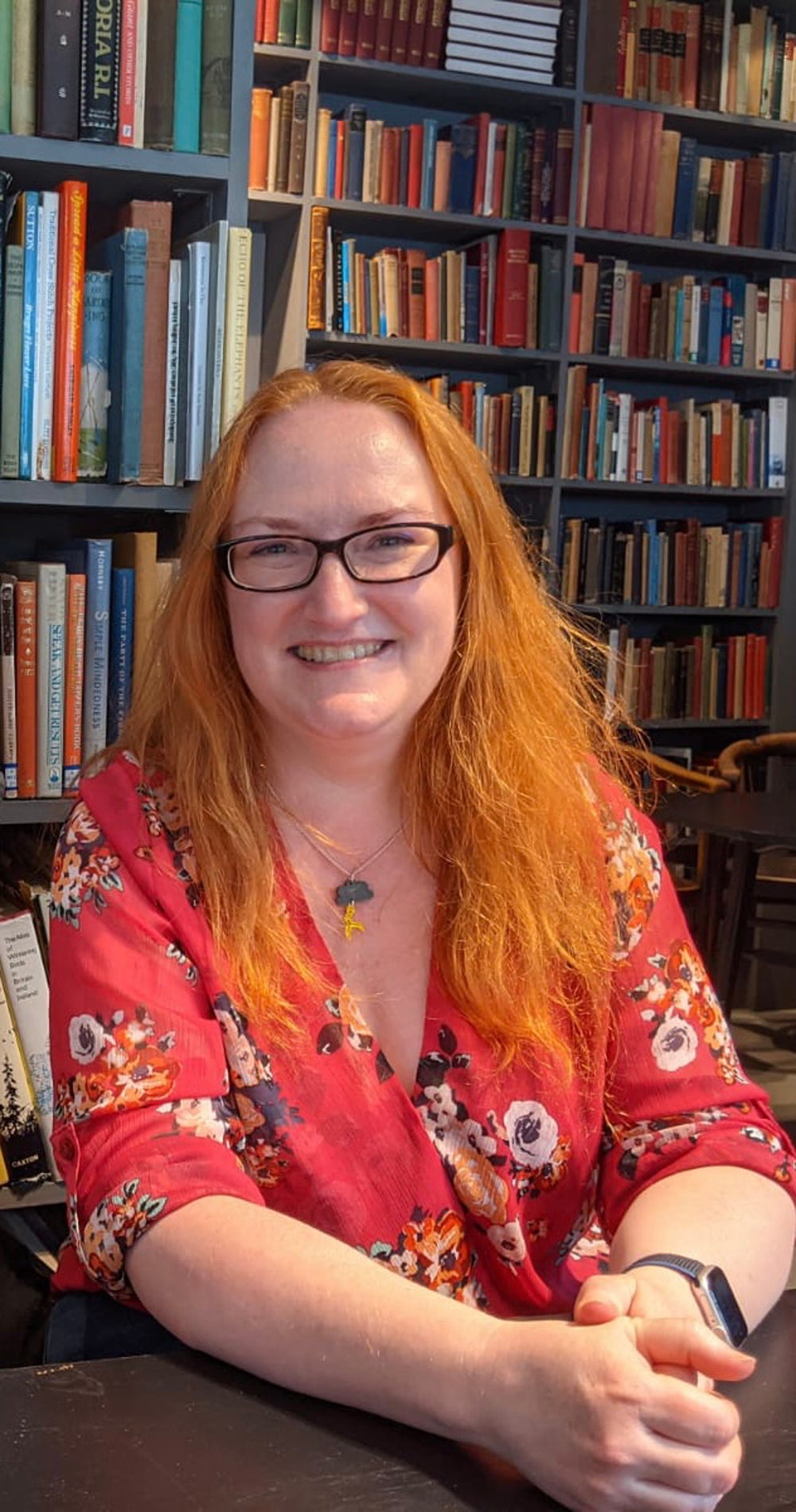
Delighted with the results, Karen, of Finchley, north London, said: “For two years after surgery, I avoided mirrors.
“But, seeing the tattoo for the first time, I couldn’t believe how beautiful it was.
“It made me feel beautiful in a way that I hadn’t in a long time. I had turned a part of me that reminded me of something negative into something elegant, sexy and feminine.”
Unusually, it was being treated for a different health complication that led to Karen’s cancer diagnosis in July 2018.
She said: “I had been having loads of stomach problems and was seeing a gastro specialist for what turned out to be gallstones.
“When they were doing one of the MRI scans, they noticed something at the bottom off my left breast that they suggested I got checked.”

Karen was not overly concerned as in 1992, aged 20, she had a non-cancerous, benign lump identified and assumed it had recurred.
But a mammogram and ultrasound revealed worrying signs around her right breast.
She said: “The results came back and doctors said I had invasive ductal carcinoma (IDC) and high-grade ductal carcinoma in situ (DCIS), which meant I had cancerous cells in the lining of the ducts of the breast tissue.”
It felt like I was losing a part of me and I was confronted with the idea of looking different.
Karen added: “I had stupidly gone to the appointment on my own assuming everything was okay. I heard the words, ‘You have cancer’ and just went numb.
“I remember sitting there with the surgeon drawing a diagram on a bit of paper, showing what he was going to do in terms of the surgery and my brain just couldn’t process it.”
With plans to head to New York, USA, for three months to write fiction, Karen’s diagnosis could not have come at a worse time.
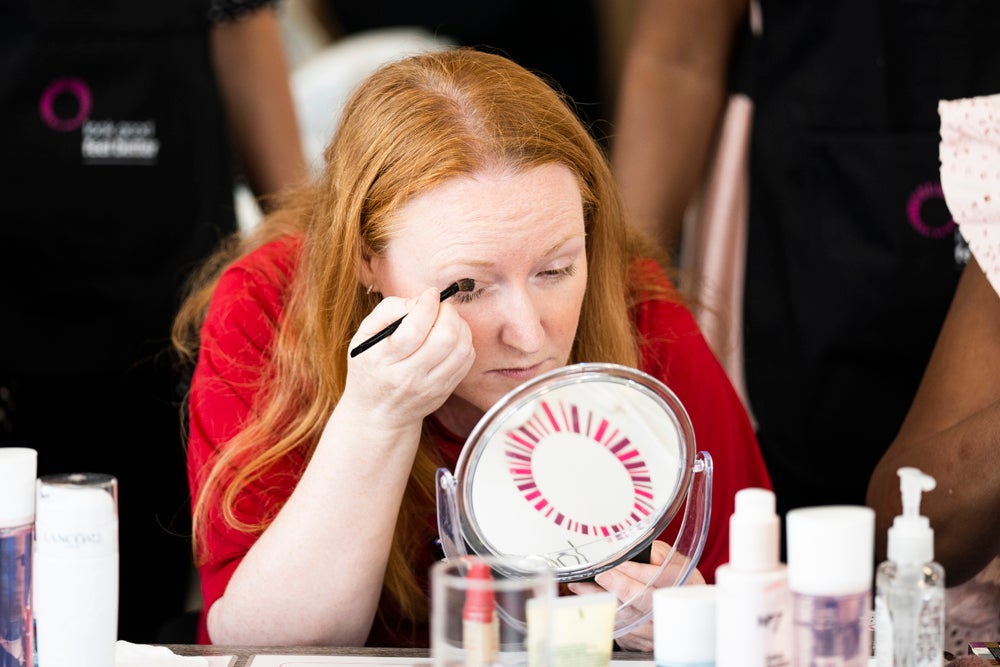
She said: “I was working at Channel 4 on a maternity cover job that was just a year’s contract, so I could go to New York.
“I was desperate to experience a new kind of city life and enjoy the shows and culture that New York has.
“I was angry at life because I had saved up this pocket of money to do this thing I had always wanted to do and now it was getting eaten up by bills.”
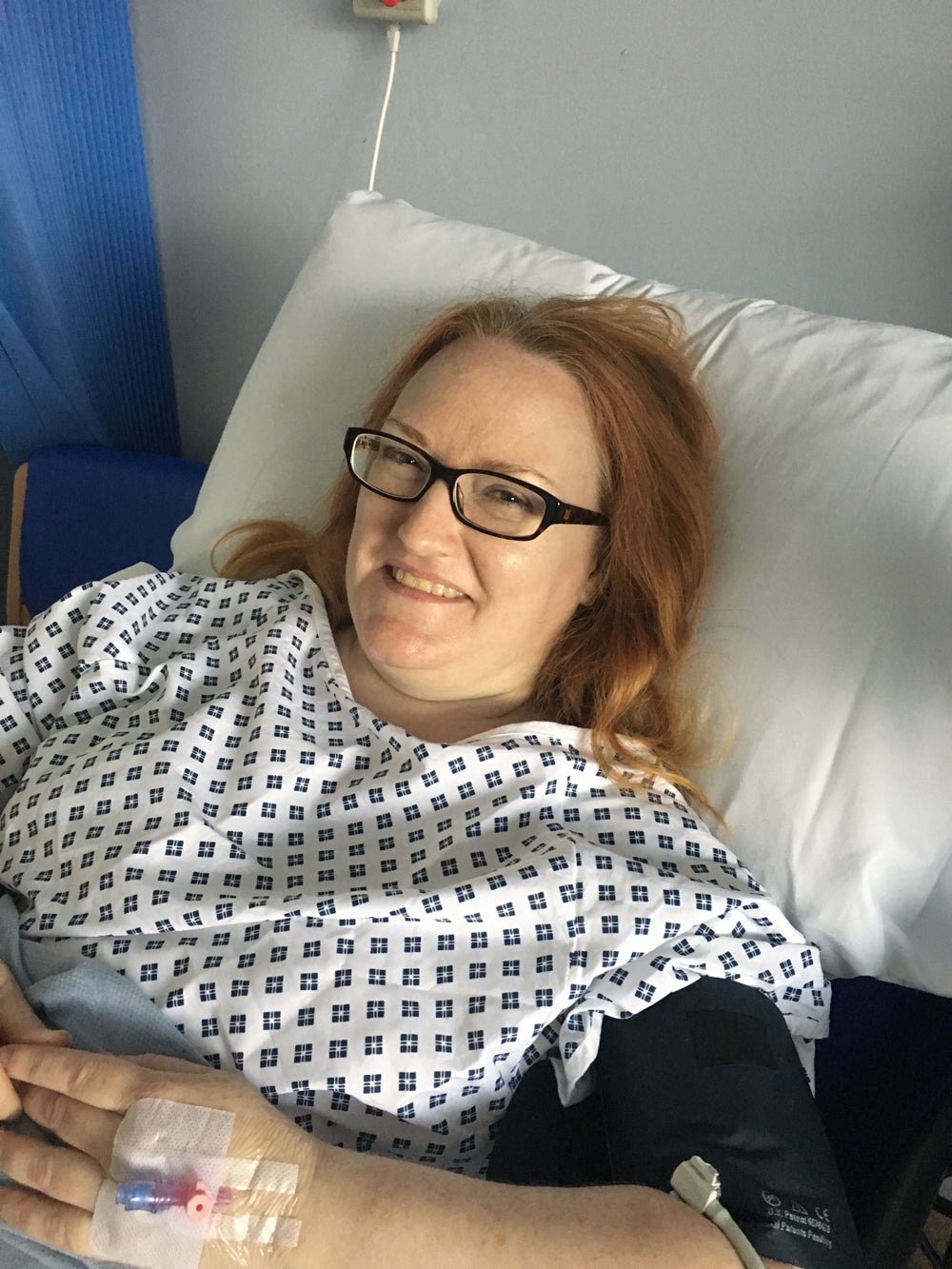
Less than three weeks after her diagnosis, in August 2018, Karen had her first lumpectomy to try and remove the cancerous tissue from her breast.
But post-surgery, further scans revealed there was more tissue to be removed and Karen had a second lumpectomy.
She said: “After the second operation, they said they still didn’t have clear margins and there was more DCIS in the breast tissue.”
I found it difficult to look at myself in the mirror.
Karen added: “Basically, the next best option was a mastectomy.
“All my life, I’d lived with my breasts and not thought about them much and then, being told I was going to lose one, it felt like I was losing a part of me and I was confronted with the idea of looking different.”
In November that year, Karen had a 10 hour operation, which included a mastectomy and DIEP reconstruction – where surgeons use the fat and skin from the lower belly to rebuild the breast.
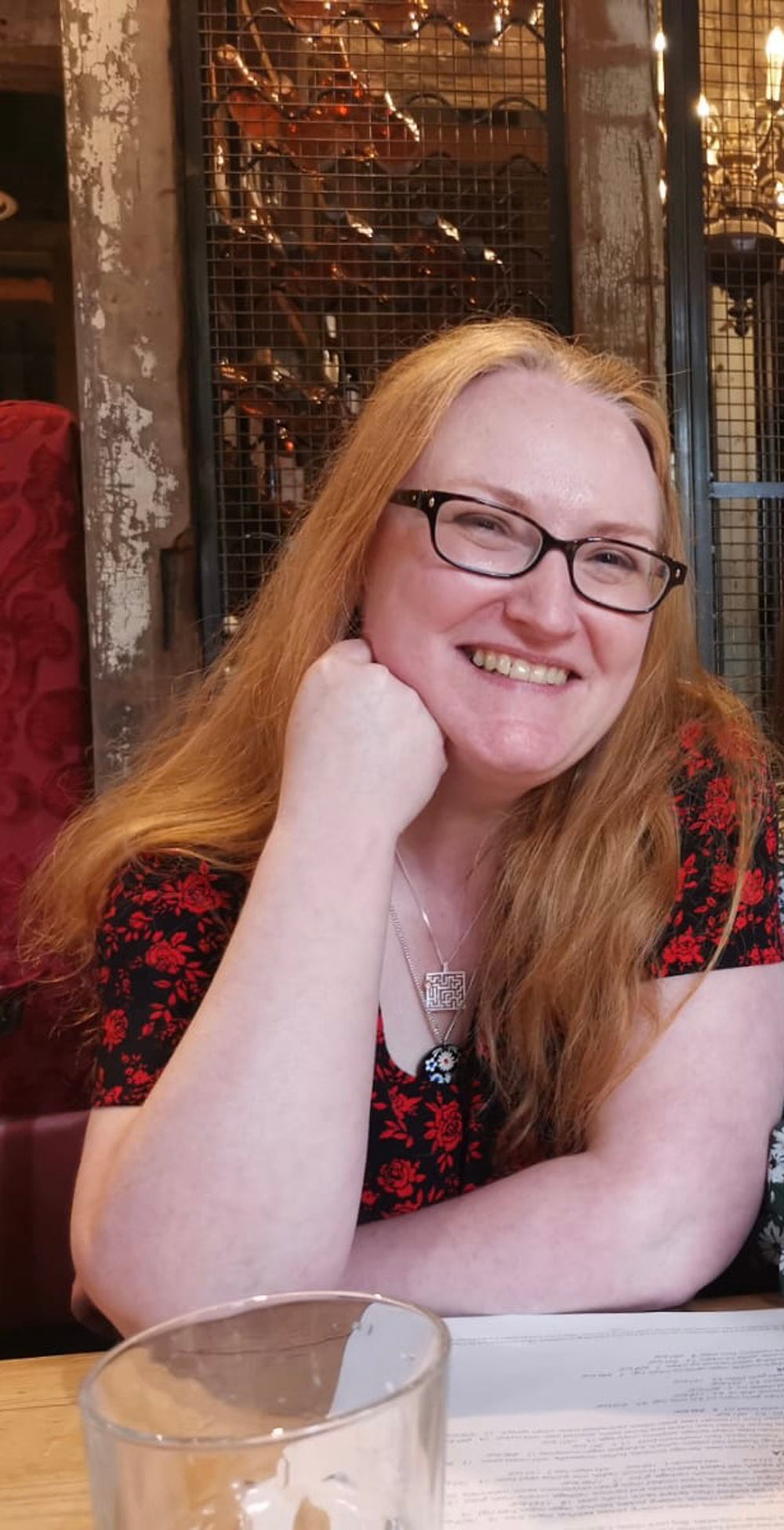
Overwhelmed by the operation and still coming to terms with the whirlwind four months she had been through, Karen struggled to adjust.
She said: “I remember on day three in hospital after the operation crying and thinking I had made the worst decision, because I was in pain and couldn’t stand up properly because of my stomach.
“It was only afterwards that I realised I needed to give myself some time to grieve losing a part of myself. It feels selfish to moan about losing something when it saved my life, but it is still a valid thing to grieve.”
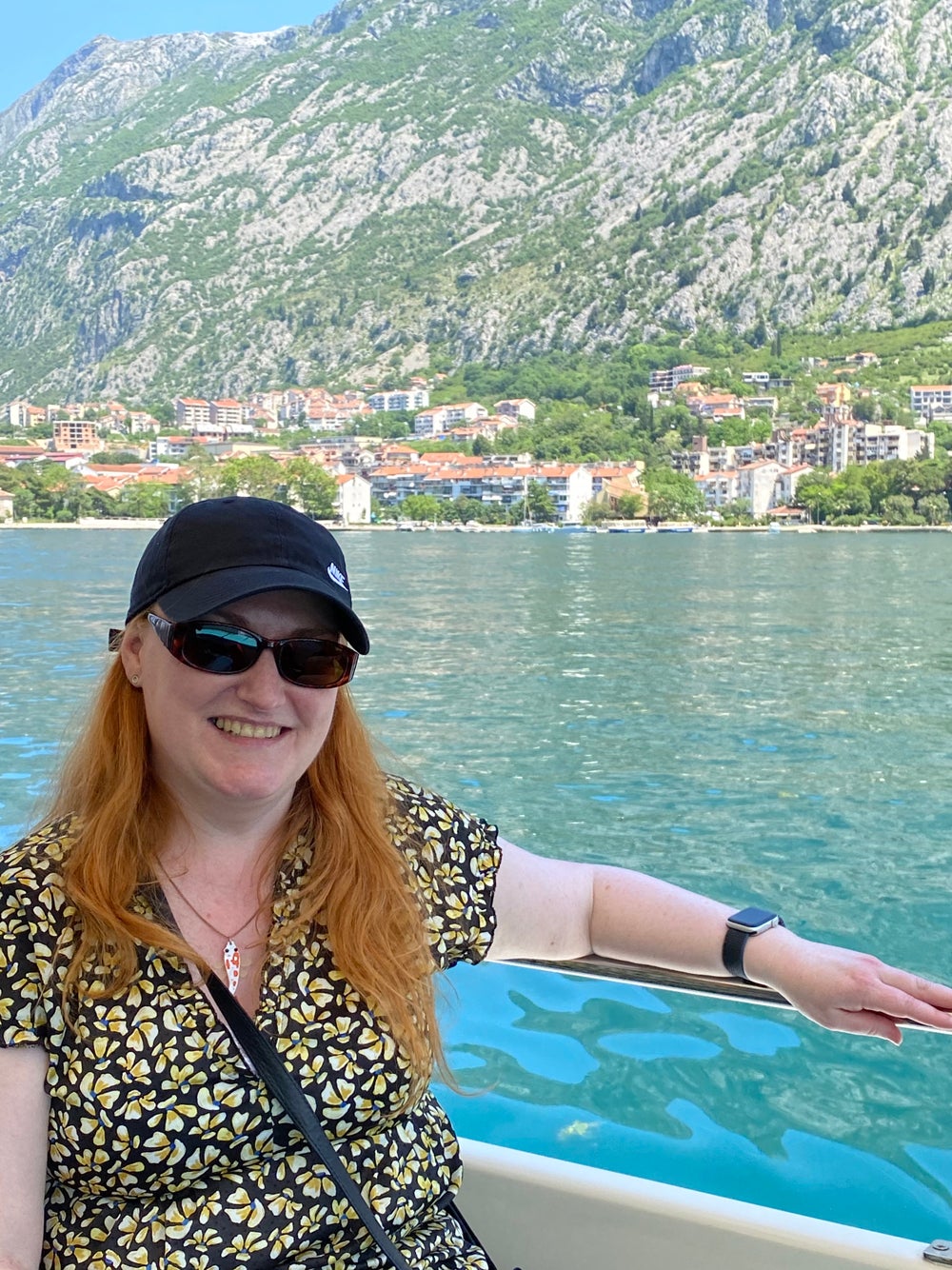
Karen found herself avoiding having to look at her new reconstructed breast, which she saw as a reminder of the challenging period she had gone through – despite her gratitude to the surgeons.
She said: “I only ever saw my breast when they changed the dressings for the first couple of weeks.
“When I was at home, I found it difficult to look at myself in the mirror. When I massaged the scars, I would distract myself with the TV rather than looking in the mirror while doing it.”
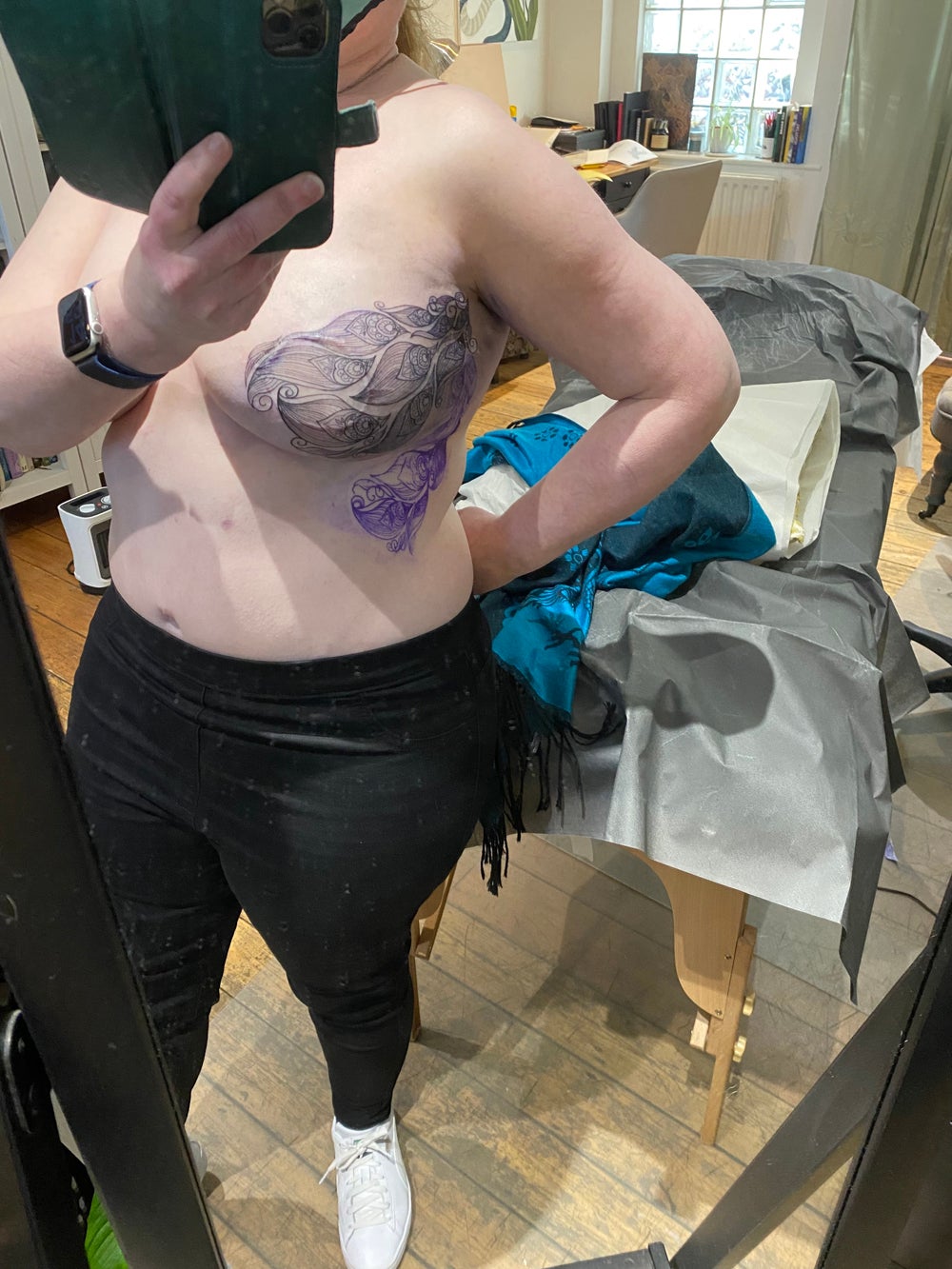
Learning to adapt to her new body through lockdown, Karen began to think about the idea of having a mastectomy tattoo.
She said: “I’ve never had a tattoo before because I never thought it was very me.
“While they look amazing, I didn’t personally like the idea of having a nipple tattooed because I knew in my head, I would know it wasn’t real.”
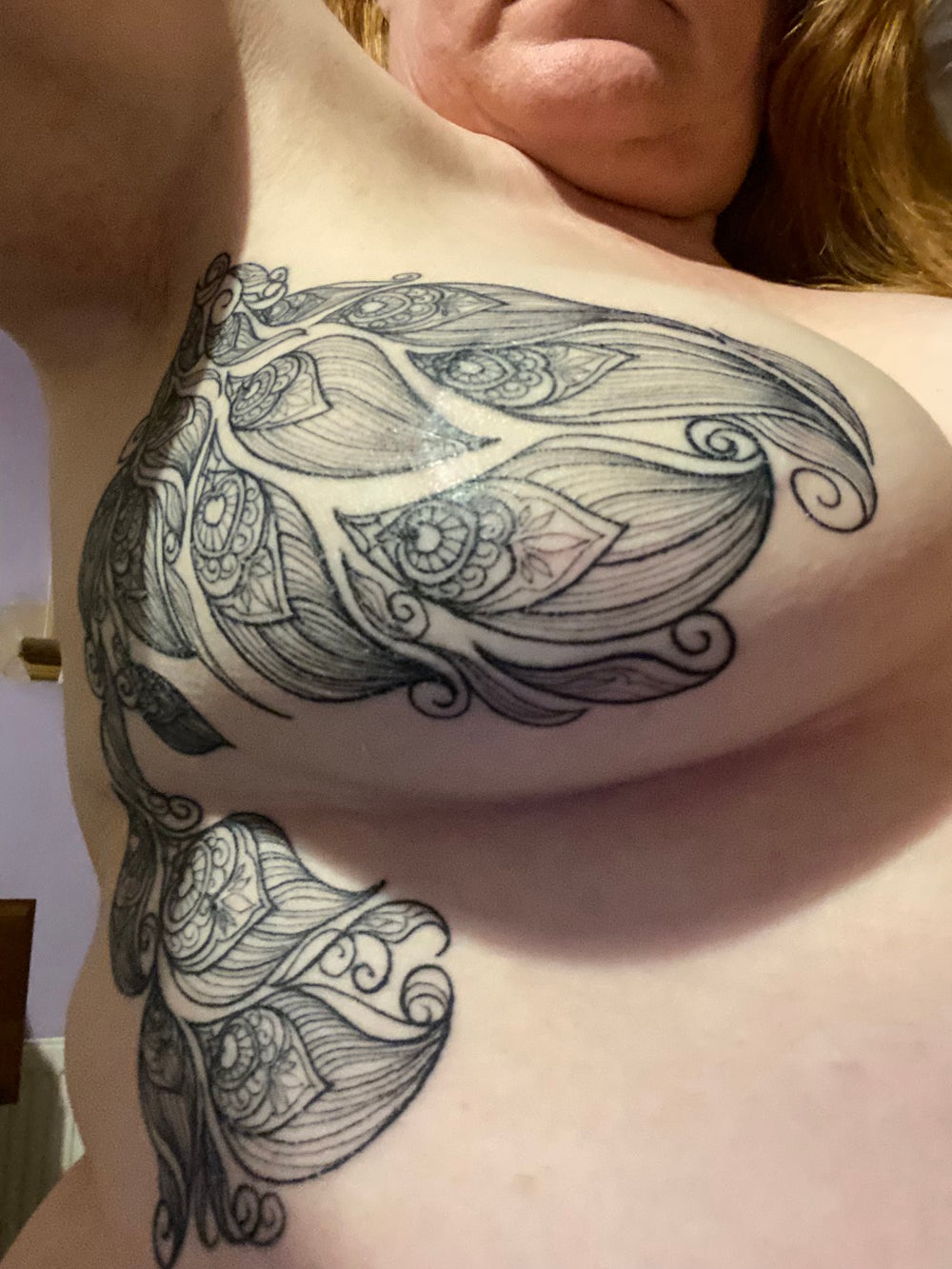
She added: “I wanted to do something that I would feel happy to look at.
“I didn’t like looking at my scars or breasts in the mirror – not because scars are ugly – but because they represented a negative experience in my life.”
So, with kintsugi as her inspiration, she started researching and planning her mastectomy tattoo, before booking it in for March, this year.
It was so much more beautiful than I thought it ever could be.
She said: “The idea of kintsugi is that you are mending things that have been broken with a bold repair, so you can see the pain and the breaks rather than hiding them.
“It’s about celebrating the fragility of life and showing that sometimes when something breaks, it makes you stronger.
“My tattoo was inspired by peacock feathers, with big sweeps and feathered elegance.”
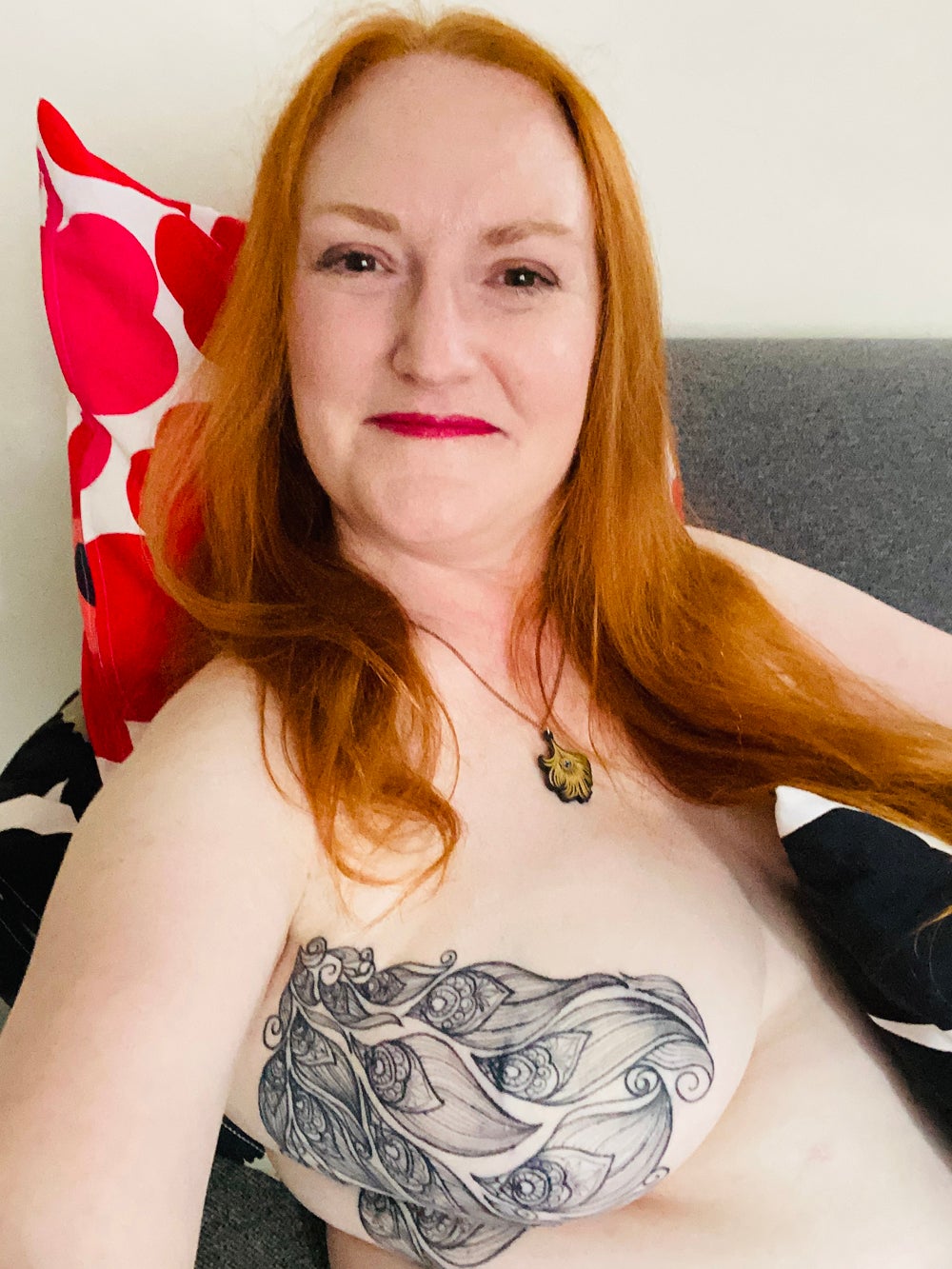
Seeing the tattoo for the first time, Karen felt overwhelmed with joy and emotion.
She said: “When I saw it, I couldn’t believe how beautiful it was. It was so much more beautiful than I thought it ever could be. I feel so proud and empowered by it.
“I had a trip to a spa day for a friend’s birthday a few weeks ago and I was really looking forward to stripping off in the changing rooms and showing her my tattoo. I would never have done anything that bold before.”
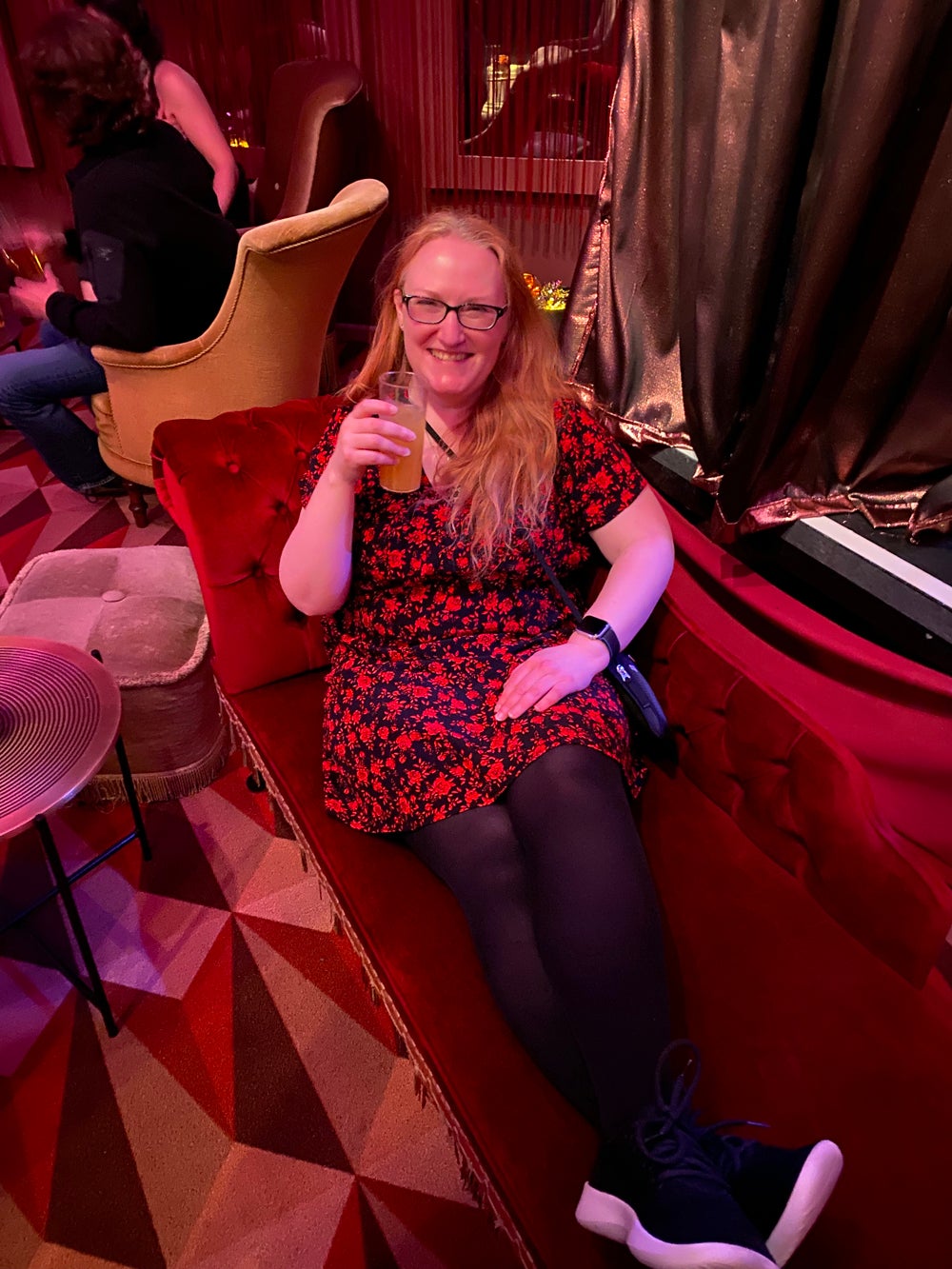
As well as hoping that her experience will help other women going through and recovering from cancer treatment, Karen helps run the DIEP Reconstruction UK forum on Facebook.
She said: “It’s a case of just reaching back and helping somebody else up the hill that you just climbed and being able to encourage somebody who’s having a difficult time.”
And while she is currently single, she feels her mastectomy tattoo has given her a new confidence in her appearance and who she is.

She said: “I feel more confident than I used to both physically and spiritually.
“My tattoo is now part of my appeal. It’s something different.
“It’s beautiful, sexy and feminine.”
- For further information or advice about breast cancer visit Breast Cancer Now at breastcancernow.org